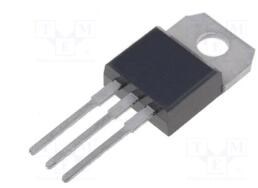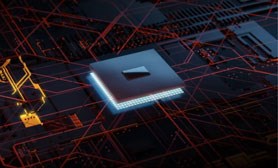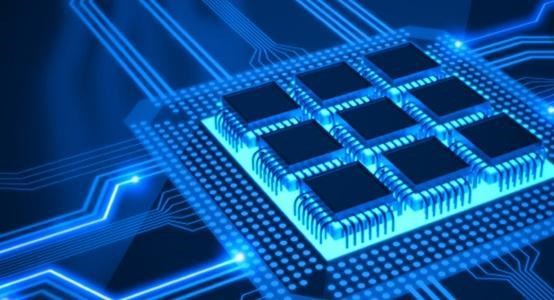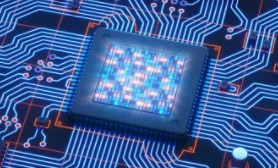Exploring the STM32L083xx Ultra-Low-Power 32-bit MCU
1.5MB 1.5M x 8 FLASH TriCore™ 32-Bit Microcontroller TC17xx Series 176 Pin 133MHz 176-LQFP









1.5MB 1.5M x 8 FLASH TriCore™ 32-Bit Microcontroller TC17xx Series 176 Pin 133MHz 176-LQFP
The STM32L083xx is an ultra-low-power 32-bit microcontroller unit (MCU) renowned for its energy-efficient operation and a diverse array of integrated features. In this comprehensive technical article, we delve into the details of the STM32L083xx, exploring its technical specifications, key features, applications, reference designs, alternative parts, and addressing frequently asked questions (FAQs).
Product Introduction
Description
The STM32L083xx is a standout ultra-low-power 32-bit MCU designed to address the demanding requirements of modern embedded systems. With its focus on energy efficiency, the MCU offers a winning combination of power-conscious operation and high-performance capabilities.
Features
The STM32L083xx boasts a multitude of features, including:
- Ultra-low-power consumption for extended battery life
- Arm Cortex-M0+ core for efficient processing
- On-chip memory options tailored to diverse application needs
- Rich set of analog and digital peripherals for versatile interfacing
- Energy-efficient operating modes for optimized power management
Applications
The STM32L083xx finds prominence in various applications, serving as a key component in:
- Internet of Things (IoT) devices for energy-efficient connectivity
- Wearable devices requiring low-power operation and advanced functionalities
- Smart home automation systems for reliable and efficient control
- Sensor nodes in industrial and environmental monitoring applications
- Portable medical devices requiring long battery life
Moreover, the MCU is compatible with specific modules catering to connectivity solutions, sensor interfacing, and custom applications, enhancing its adaptability across a wide spectrum of embedded system designs.
Reference Designs
Several reference designs have harnessed the capabilities of the STM32L083xx for diverse applications. These reference designs showcase the MCU's seamless integration into specific systems, providing valuable insights into its real-world application scenarios.
Alternative Parts
In addition to the STM32L083xx, there exist alternative parts within the STM32 family and from other manufacturers, offering similar capabilities and functionalities. These alternatives offer flexibility in selecting the most suitable MCU based on the specific requirements of a project.
FAQs
1. What is the standby current in the lowest power mode?
- The standby mode offers a standby current of 0.29 µA with 3 wakeup pins.
2. Does the MCU support touch sensing?
- Yes, the STM32L083xx MCU supports up to 19 capacitive sensing channels for touchkey linear and rotary touch sensors.
3. Can the MCU operate in extreme temperature conditions?
- The MCU is designed to operate in a temperature range of -40 to 125 °C, making it suitable for harsh environments.
Specifications
- TypeParameter
- Factory Lead Time26 Weeks
- Mounting Type
The "Mounting Type" in electronic components refers to the method used to attach or connect a component to a circuit board or other substrate, such as through-hole, surface-mount, or panel mount.
Surface Mount - Package / Case
refers to the protective housing that encases an electronic component, providing mechanical support, electrical connections, and thermal management.
176-LQFP - Number of Pins176
- Data ConvertersA/D 4x10b, 32x12b
- Number of I/Os127
- Watchdog TimersYes
- Operating Temperature
The operating temperature is the range of ambient temperature within which a power supply, or any other electrical equipment, operate in. This ranges from a minimum operating temperature, to a peak or maximum operating temperature, outside which, the power supply may fail.
-40°C~125°C TA - Packaging
Semiconductor package is a carrier / shell used to contain and cover one or more semiconductor components or integrated circuits. The material of the shell can be metal, plastic, glass or ceramic.
Tape & Reel (TR) - Series
In electronic components, the "Series" refers to a group of products that share similar characteristics, designs, or functionalities, often produced by the same manufacturer. These components within a series typically have common specifications but may vary in terms of voltage, power, or packaging to meet different application needs. The series name helps identify and differentiate between various product lines within a manufacturer's catalog.
TC17xx - Published2005
- Pbfree Code
The "Pbfree Code" parameter in electronic components refers to the code or marking used to indicate that the component is lead-free. Lead (Pb) is a toxic substance that has been widely used in electronic components for many years, but due to environmental concerns, there has been a shift towards lead-free alternatives. The Pbfree Code helps manufacturers and users easily identify components that do not contain lead, ensuring compliance with regulations and promoting environmentally friendly practices. It is important to pay attention to the Pbfree Code when selecting electronic components to ensure they meet the necessary requirements for lead-free applications.
yes - Part Status
Parts can have many statuses as they progress through the configuration, analysis, review, and approval stages.
Active - Moisture Sensitivity Level (MSL)
Moisture Sensitivity Level (MSL) is a standardized rating that indicates the susceptibility of electronic components, particularly semiconductors, to moisture-induced damage during storage and the soldering process, defining the allowable exposure time to ambient conditions before they require special handling or baking to prevent failures
3 (168 Hours) - Max Power Dissipation
The maximum power that the MOSFET can dissipate continuously under the specified thermal conditions.
2.006W - Peak Reflow Temperature (Cel)
Peak Reflow Temperature (Cel) is a parameter that specifies the maximum temperature at which an electronic component can be exposed during the reflow soldering process. Reflow soldering is a common method used to attach electronic components to a circuit board. The Peak Reflow Temperature is crucial because it ensures that the component is not damaged or degraded during the soldering process. Exceeding the specified Peak Reflow Temperature can lead to issues such as component failure, reduced performance, or even permanent damage to the component. It is important for manufacturers and assemblers to adhere to the recommended Peak Reflow Temperature to ensure the reliability and functionality of the electronic components.
NOT SPECIFIED - Frequency
In electronic components, the parameter "Frequency" refers to the rate at which a signal oscillates or cycles within a given period of time. It is typically measured in Hertz (Hz) and represents how many times a signal completes a full cycle in one second. Frequency is a crucial aspect in electronic components as it determines the behavior and performance of various devices such as oscillators, filters, and communication systems. Understanding the frequency characteristics of components is essential for designing and analyzing electronic circuits to ensure proper functionality and compatibility with other components in a system.
133MHz - Time@Peak Reflow Temperature-Max (s)
Time@Peak Reflow Temperature-Max (s) refers to the maximum duration that an electronic component can be exposed to the peak reflow temperature during the soldering process, which is crucial for ensuring reliable solder joint formation without damaging the component.
NOT SPECIFIED - Interface
In electronic components, the term "Interface" refers to the point at which two different systems, devices, or components connect and interact with each other. It can involve physical connections such as ports, connectors, or cables, as well as communication protocols and standards that facilitate the exchange of data or signals between the connected entities. The interface serves as a bridge that enables seamless communication and interoperability between different parts of a system or between different systems altogether. Designing a reliable and efficient interface is crucial in ensuring proper functionality and performance of electronic components and systems.
CAN - Memory Size
The memory capacity is the amount of data a device can store at any given time in its memory.
1.5kB - Oscillator Type
Wien Bridge Oscillator; RC Phase Shift Oscillator; Hartley Oscillator; Voltage Controlled Oscillator; Colpitts Oscillator; Clapp Oscillators; Crystal Oscillators; Armstrong Oscillator.
External - RAM Size
RAM size refers to the amount of random access memory (RAM) available in an electronic component, such as a computer or smartphone. RAM is a type of volatile memory that stores data and instructions that are actively being used by the device's processor. The RAM size is typically measured in gigabytes (GB) and determines how much data the device can store and access quickly for processing. A larger RAM size allows for smoother multitasking, faster loading times, and better overall performance of the electronic component. It is an important factor to consider when choosing a device, especially for tasks that require a lot of memory, such as gaming, video editing, or running multiple applications simultaneously.
152K x 8 - Voltage - Supply (Vcc/Vdd)
Voltage - Supply (Vcc/Vdd) is a key parameter in electronic components that specifies the voltage level required for the proper operation of the device. It represents the power supply voltage that needs to be provided to the component for it to function correctly. This parameter is crucial as supplying the component with the correct voltage ensures that it operates within its specified limits and performance characteristics. It is typically expressed in volts (V) and is an essential consideration when designing and using electronic circuits to prevent damage and ensure reliable operation.
1.17V~3.63V - uPs/uCs/Peripheral ICs Type
The parameter "uPs/uCs/Peripheral ICs Type" refers to the classification of various integrated circuits used in electronic devices. It encompasses microprocessors (uPs), microcontrollers (uCs), and peripheral integrated circuits that provide additional functionalities. This classification helps in identifying the specific type of chip used for processing tasks, controlling hardware, or interfacing with other components in a system. Understanding this parameter is essential for selecting the appropriate electronic components for a given application.
MICROCONTROLLER, RISC - Core Processor
The term "Core Processor" typically refers to the central processing unit (CPU) of a computer or electronic device. It is the primary component responsible for executing instructions, performing calculations, and managing data within the system. The core processor is often considered the brain of the device, as it controls the overall operation and functionality. It is crucial for determining the speed and performance capabilities of the device, as well as its ability to handle various tasks and applications efficiently. In modern devices, core processors can have multiple cores, allowing for parallel processing and improved multitasking capabilities.
TriCore™ - Peripherals
In the context of electronic components, "Peripherals" refer to devices or components that are connected to a main system or device to enhance its functionality or provide additional features. These peripherals can include input devices such as keyboards, mice, and touchscreens, as well as output devices like monitors, printers, and speakers. Other examples of peripherals include external storage devices, network adapters, and cameras. Essentially, peripherals are external devices that expand the capabilities of a main electronic system or device.
DMA, POR, WDT - Program Memory Type
Program memory typically refers to flash memory when it is used to hold the program (instructions). Program memory may also refer to a hard drive or solid state drive (SSD). Contrast with data memory.
FLASH - Core Size
Core size in electronic components refers to the physical dimensions of the core material used in devices such as inductors and transformers. The core size directly impacts the performance characteristics of the component, including its inductance, saturation current, and frequency response. A larger core size typically allows for higher power handling capabilities and lower core losses, while a smaller core size may result in a more compact design but with limitations on power handling and efficiency. Designers must carefully select the core size based on the specific requirements of the application to achieve optimal performance and efficiency.
32-Bit - Program Memory Size
Program Memory Size refers to the amount of memory available in an electronic component, such as a microcontroller or microprocessor, that is used to store program instructions. This memory is non-volatile, meaning that the data stored in it is retained even when the power is turned off. The program memory size determines the maximum amount of code that can be stored and executed by the electronic component. It is an important parameter to consider when selecting a component for a specific application, as insufficient program memory size may limit the functionality or performance of the device.
1.5MB 1.5M x 8 - Connectivity
In electronic components, "Connectivity" refers to the ability of a component to establish and maintain connections with other components or devices within a circuit. It is a crucial parameter that determines how easily signals can be transmitted between different parts of a circuit. Connectivity can be influenced by factors such as the number of input and output ports, the type of connectors used, and the overall design of the component. Components with good connectivity are essential for ensuring reliable and efficient operation of electronic systems.
ASC, CANbus, MLI, MSC, SSC - Data Bus Width
The data bus width in electronic components refers to the number of bits that can be transferred simultaneously between the processor and memory. It determines the amount of data that can be processed and transferred in a single operation. A wider data bus allows for faster data transfer speeds and improved overall performance of the electronic device. Common data bus widths include 8-bit, 16-bit, 32-bit, and 64-bit, with higher numbers indicating a larger capacity for data transfer. The data bus width is an important specification to consider when evaluating the speed and efficiency of a computer system or other electronic device.
32b - Halogen Free
The term "Halogen Free" in electronic components refers to a specific characteristic of the materials used in the manufacturing of the component. Halogens are a group of elements that include fluorine, chlorine, bromine, iodine, and astatine. These elements are commonly used in flame retardants and other materials in electronics. However, the presence of halogens can pose environmental and health risks when the components are disposed of or recycled.Therefore, electronic components labeled as "Halogen Free" are manufactured without the use of halogenated materials. This designation indicates that the components do not contain any halogens, making them safer for the environment and human health. Halogen-free components are becoming increasingly popular in the electronics industry due to the growing awareness of environmental concerns and regulations regarding hazardous substances in electronic products.
Halogen Free - Number of Timers/Counters3
- EEPROM Size
EEPROM Size refers to the amount of memory capacity available in an Electrically Erasable Programmable Read-Only Memory (EEPROM) chip. This parameter indicates the total storage space in bytes or bits that can be used to store data in a non-volatile manner. The EEPROM size determines the maximum amount of information that can be written, read, and erased from the memory chip. It is an important specification to consider when selecting an EEPROM for a particular application, as it directly impacts the amount of data that can be stored and accessed by the electronic component.
64K x 8 - Number of Programmable I/O95
- RoHS Status
RoHS means “Restriction of Certain Hazardous Substances” in the “Hazardous Substances Directive” in electrical and electronic equipment.
ROHS3 Compliant - Lead Free
Lead Free is a term used to describe electronic components that do not contain lead as part of their composition. Lead is a toxic material that can have harmful effects on human health and the environment, so the electronics industry has been moving towards lead-free components to reduce these risks. Lead-free components are typically made using alternative materials such as silver, copper, and tin. Manufacturers must comply with regulations such as the Restriction of Hazardous Substances (RoHS) directive to ensure that their products are lead-free and environmentally friendly.
Lead Free
Parts with Similar Specs
- ImagePart NumberManufacturerPackage / CaseNumber of PinsData Bus WidthNumber of I/OInterfaceMemory SizePeripheralsMoisture Sensitivity Level (MSL)View Compare
TC1728N192F133HRACKXUMA2
176-LQFP
176
32 b
127
CAN
1.5 kB
DMA, POR, WDT
3 (168 Hours)
176-LQFP
176
32 b
140
CAN, EBI/EMI, Ethernet, I2C, I2S, IrDA, LIN, SPI, UART, USART, USB
512 kB
Brown-out Detect/Reset, DMA, I2S, LCD, POR, PWM, WDT
3 (168 Hours)
176-LQFP
176
32 b
140
CAN, EBI/EMI, Ethernet, I2C, I2S, IrDA, LIN, SPI, UART, USART, USB
1 MB
Brown-out Detect/Reset, DMA, I2S, LCD, POR, PWM, WDT
3 (168 Hours)
176-LQFP
176
32 b
140
CAN, Ethernet, I2C, I2S, IrDA, LIN, MMC, SDIO, SPI, UART, USART, USB
1 MB
Brown-out Detect/Reset, DMA, I2S, LCD, POR, PWM, WDT
3 (168 Hours)
176-LQFP
176
32 b
133
CAN, EBI/EMI, Ethernet, I2C, LIN, SCI, SPI, UART, USB
768 kB
DMA, LVD, POR, PWM, WDT
3 (168 Hours)
Datasheet PDF
- Datasheets :
- PCN Packaging :
- Other Related Documents :
- PCN Design/Specification :
- ConflictMineralStatement :
![TYN616 Thyristors SCRs 600V 16A TO-220AB[FAQ]: Pinout, Features, and Datasheet](https://res.utmel.com/Images/Article/d3c7ac52-c798-439a-843d-1bc66885c4d3.png) TYN616 Thyristors SCRs 600V 16A TO-220AB[FAQ]: Pinout, Features, and Datasheet
TYN616 Thyristors SCRs 600V 16A TO-220AB[FAQ]: Pinout, Features, and Datasheet04 May 20226177
 SN74LVC1G08DCKR positive-AND gate: Features, Applications and Datasheet
SN74LVC1G08DCKR positive-AND gate: Features, Applications and Datasheet20 October 2023779
![BT139 Triac: Features, Pinout, and Datasheet [Video&FAQ]](https://res.utmel.com/Images/Article/30368d53-55d3-4011-993d-48d18d9bfed7.png) BT139 Triac: Features, Pinout, and Datasheet [Video&FAQ]
BT139 Triac: Features, Pinout, and Datasheet [Video&FAQ]03 December 202124039
![The Comprehensive Introduction to AD8310 [FAQ]](https://res.utmel.com/Images/Article/90927bcc-34e5-4a68-ab26-ab6a12161379.jpg) The Comprehensive Introduction to AD8310 [FAQ]
The Comprehensive Introduction to AD8310 [FAQ]27 May 20222119
 FOD3180 Optocoupler: Application, Circuit, Datasheet
FOD3180 Optocoupler: Application, Circuit, Datasheet20 October 20212331
 LTC6950IUHH#TRPBF Clock Generator: A Comprehensive Overview
LTC6950IUHH#TRPBF Clock Generator: A Comprehensive Overview06 March 2024191
 1N5402 Rectifier: Features, Pinout, and Datasheet
1N5402 Rectifier: Features, Pinout, and Datasheet08 December 20211557
 FAQs about TIP32C
FAQs about TIP32C26 April 20223297
 The Underappreciated iphone - No One Believed Apple CEO Steve Jobs Would Succeed Before
The Underappreciated iphone - No One Believed Apple CEO Steve Jobs Would Succeed Before01 July 20222750
 Robotics and Semiconductor Industries Face Challenges and Opportunities
Robotics and Semiconductor Industries Face Challenges and Opportunities09 September 20232136
 What is an Encoder?
What is an Encoder?20 October 20206876
 An Artificial Brain Chip With 86 Billion Physical Neurons
An Artificial Brain Chip With 86 Billion Physical Neurons31 March 20223565
 Transfer Learning Method for detailed defect classification in semiconductor manufacturing based on Convolution Neural Network
Transfer Learning Method for detailed defect classification in semiconductor manufacturing based on Convolution Neural Network13 January 20231806
 Beginners Guide to FPGA Design
Beginners Guide to FPGA Design29 December 2021818
 What is a Semiconductor?
What is a Semiconductor?22 October 20257153
 What are the Applications of Filters?
What are the Applications of Filters?23 October 202114307
Infineon Technologies
In Stock: 500
United States
China
Canada
Japan
Russia
Germany
United Kingdom
Singapore
Italy
Hong Kong(China)
Taiwan(China)
France
Korea
Mexico
Netherlands
Malaysia
Austria
Spain
Switzerland
Poland
Thailand
Vietnam
India
United Arab Emirates
Afghanistan
Åland Islands
Albania
Algeria
American Samoa
Andorra
Angola
Anguilla
Antigua & Barbuda
Argentina
Armenia
Aruba
Australia
Azerbaijan
Bahamas
Bahrain
Bangladesh
Barbados
Belarus
Belgium
Belize
Benin
Bermuda
Bhutan
Bolivia
Bonaire, Sint Eustatius and Saba
Bosnia & Herzegovina
Botswana
Brazil
British Indian Ocean Territory
British Virgin Islands
Brunei
Bulgaria
Burkina Faso
Burundi
Cabo Verde
Cambodia
Cameroon
Cayman Islands
Central African Republic
Chad
Chile
Christmas Island
Cocos (Keeling) Islands
Colombia
Comoros
Congo
Congo (DRC)
Cook Islands
Costa Rica
Côte d’Ivoire
Croatia
Cuba
Curaçao
Cyprus
Czechia
Denmark
Djibouti
Dominica
Dominican Republic
Ecuador
Egypt
El Salvador
Equatorial Guinea
Eritrea
Estonia
Eswatini
Ethiopia
Falkland Islands
Faroe Islands
Fiji
Finland
French Guiana
French Polynesia
Gabon
Gambia
Georgia
Ghana
Gibraltar
Greece
Greenland
Grenada
Guadeloupe
Guam
Guatemala
Guernsey
Guinea
Guinea-Bissau
Guyana
Haiti
Honduras
Hungary
Iceland
Indonesia
Iran
Iraq
Ireland
Isle of Man
Israel
Jamaica
Jersey
Jordan
Kazakhstan
Kenya
Kiribati
Kosovo
Kuwait
Kyrgyzstan
Laos
Latvia
Lebanon
Lesotho
Liberia
Libya
Liechtenstein
Lithuania
Luxembourg
Macao(China)
Madagascar
Malawi
Maldives
Mali
Malta
Marshall Islands
Martinique
Mauritania
Mauritius
Mayotte
Micronesia
Moldova
Monaco
Mongolia
Montenegro
Montserrat
Morocco
Mozambique
Myanmar
Namibia
Nauru
Nepal
New Caledonia
New Zealand
Nicaragua
Niger
Nigeria
Niue
Norfolk Island
North Korea
North Macedonia
Northern Mariana Islands
Norway
Oman
Pakistan
Palau
Palestinian Authority
Panama
Papua New Guinea
Paraguay
Peru
Philippines
Pitcairn Islands
Portugal
Puerto Rico
Qatar
Réunion
Romania
Rwanda
Samoa
San Marino
São Tomé & Príncipe
Saudi Arabia
Senegal
Serbia
Seychelles
Sierra Leone
Sint Maarten
Slovakia
Slovenia
Solomon Islands
Somalia
South Africa
South Sudan
Sri Lanka
St Helena, Ascension, Tristan da Cunha
St. Barthélemy
St. Kitts & Nevis
St. Lucia
St. Martin
St. Pierre & Miquelon
St. Vincent & Grenadines
Sudan
Suriname
Svalbard & Jan Mayen
Sweden
Syria
Tajikistan
Tanzania
Timor-Leste
Togo
Tokelau
Tonga
Trinidad & Tobago
Tunisia
Turkey
Turkmenistan
Turks & Caicos Islands
Tuvalu
U.S. Outlying Islands
U.S. Virgin Islands
Uganda
Ukraine
Uruguay
Uzbekistan
Vanuatu
Vatican City
Venezuela
Wallis & Futuna
Yemen
Zambia
Zimbabwe











